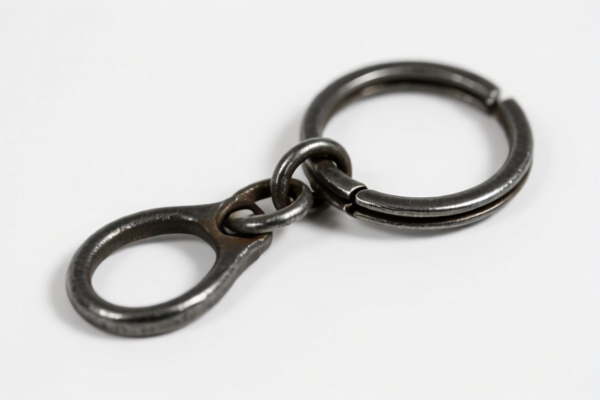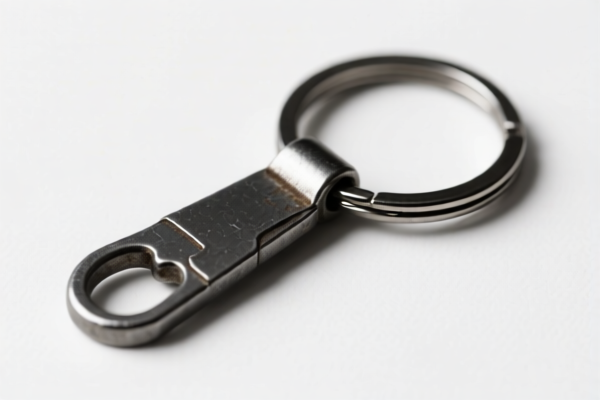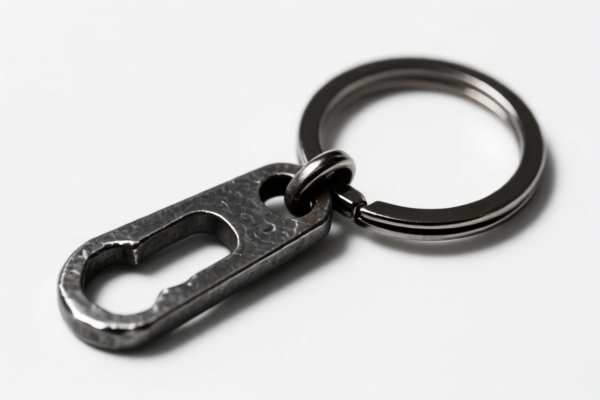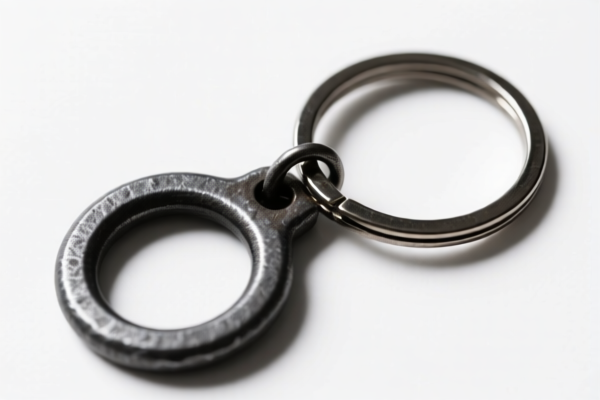| HS Code | Official Doc | Tariff Rate | Origin | Destination | Effective Date |
|---|---|---|---|---|---|
| 7419801500 | Doc | 58.0% | CN | US | 2025-05-12 |
| 7419805050 | Doc | 55.0% | CN | US | 2025-05-12 |
| 7418100002 | Doc | 40.5% | CN | US | 2025-05-12 |
| 7418100025 | Doc | 40.5% | CN | US | 2025-05-12 |
| 4911998000 | Doc | 37.5% | CN | US | 2025-05-12 |
| 4911996000 | Doc | 37.5% | CN | US | 2025-05-12 |
| 4908900000 | Doc | 37.5% | CN | US | 2025-05-12 |
| 4908100000 | Doc | 37.5% | CN | US | 2025-05-12 |




Metal Keyring
A metal keyring, also commonly known as a keychain, is a small chain or ring, typically made of metal, used to hold keys or other small items.
Material
The most common materials used in metal keyrings include:
- Base Metals: Brass, steel, iron, zinc alloy are frequently used due to their durability and cost-effectiveness. These are often plated with other metals for aesthetic or protective purposes.
- Precious Metals: Silver, gold, and platinum are used for higher-end keyrings, valued for their appearance and resistance to corrosion.
- Stainless Steel: A popular choice due to its strength, corrosion resistance, and hypoallergenic properties.
- Aluminum: Lightweight and often used for decorative or promotional keyrings.
Purpose
The primary purpose of a metal keyring is to:
- Organize Keys: Keep multiple keys together in a single, easily manageable unit.
- Prevent Loss: Reduce the chance of losing keys by providing a secure attachment point.
- Identification: Often used to display personal items, logos, or charms for identification or personalization.
- Decoration: Serve as a decorative accessory.
Function
A metal keyring functions by:
- Secure Attachment: The ring or chain is designed to securely hold keys, preventing them from detaching easily. Split rings are common, requiring a tool to open and close.
- Carabiner or Clip Functionality: Some keyrings incorporate a carabiner or clip for attachment to belts, bags, or other items.
- Swivel Functionality: Many designs include a swivel to prevent tangling and twisting of keys.
Usage Scenarios
Metal keyrings are used in a wide variety of scenarios, including:
- Everyday Carry: Holding house keys, car keys, office keys.
- Promotional Items: Used as branded giveaways by businesses.
- Souvenirs: Collectible items representing locations or events.
- Accessories: Attached to bags, zippers, or clothing as decorative items.
- Security Systems: Holding security fobs or access cards.
Common Types
- Split Ring Keyrings: The most common type, consisting of a ring with a split that allows keys to be easily added or removed (requires a key ring opener tool).
- Carabiner Keyrings: Feature a spring-loaded gate for secure attachment to belts or bags.
- Chain Keyrings: Consist of a metal chain, often with a swivel and a ring for attaching keys.
- Novelty Keyrings: Feature decorative charms, logos, or characters.
- Leather Keyrings (with Metal Components): Combine leather straps with metal rings or clips.
- Bottle Opener Keyrings: Incorporate a bottle opener function into the design.
- USB Drive Keyrings: Combine a USB flash drive with a keyring for convenient data storage and portability.
Metal keyrings can fall under several classifications depending on their composition and specific characteristics. Here are potential HS codes based on the provided information:
- 7419.80.15.00: This code covers “Other articles of copper: Other: Containers of a kind normally carried on the person, in the pocket or in the handbag”. If the keyring is made of copper and designed to be carried as a personal item, this could be applicable. The total tax rate is 58.0%, comprised of a 3.0% base tariff, a 25.0% additional tariff, and a 30% additional tariff effective after April 2, 2025.
- 7419.80.50.50: This code covers “Other articles of copper: Other: Other: Other”. If the keyring is made of copper and doesn’t fall into the ‘containers’ category, this could be relevant. The total tax rate is 55.0%, consisting of a 0.0% base tariff, a 25.0% additional tariff, and a 30% additional tariff effective after April 2, 2025.
- 7418.10.00.02: This code covers “Table, kitchen or other household articles and parts thereof, of copper; pot scourers and scouring or polishing pads, gloves and the like, of copper; sanitary ware and parts thereof, of copper: Table, kitchen or other household articles and parts thereof; pot scourers and scouring or polishing pads, gloves and the like Pot scourers and scouring or polishing pads, gloves and the like: Of copper-zinc base alloys (brass)”. If the keyring is made of brass (a copper-zinc alloy), this code may apply. The total tax rate is 40.5%, consisting of a 3.0% base tariff and a 7.5% additional tariff, increasing to 30% after April 2, 2025.
- 7418.10.00.25: This code covers “Table, kitchen or other household articles and parts thereof, of copper; pot scourers and scouring or polishing pads, gloves and the like, of copper; sanitary ware and parts thereof, of copper: Table, kitchen or other household articles and parts thereof; pot scourers and scouring or polishing pads, gloves and the like Other: Other: Of copper-zinc base alloys (brass): Other”. If the keyring is made of brass and falls into the 'other' category, this code may be applicable. The total tax rate is 40.5%, consisting of a 3.0% base tariff and a 7.5% additional tariff, increasing to 30% after April 2, 2025.
Important Note: The applicable HS code depends on the material composition of the keyring. If the keyring is made of copper, codes 7419.80.15.00 or 7419.80.50.50 are potential options. If it is made of brass, codes 7418.10.00.02 or 7418.10.00.25 should be considered.
Customer Reviews
No reviews yet.